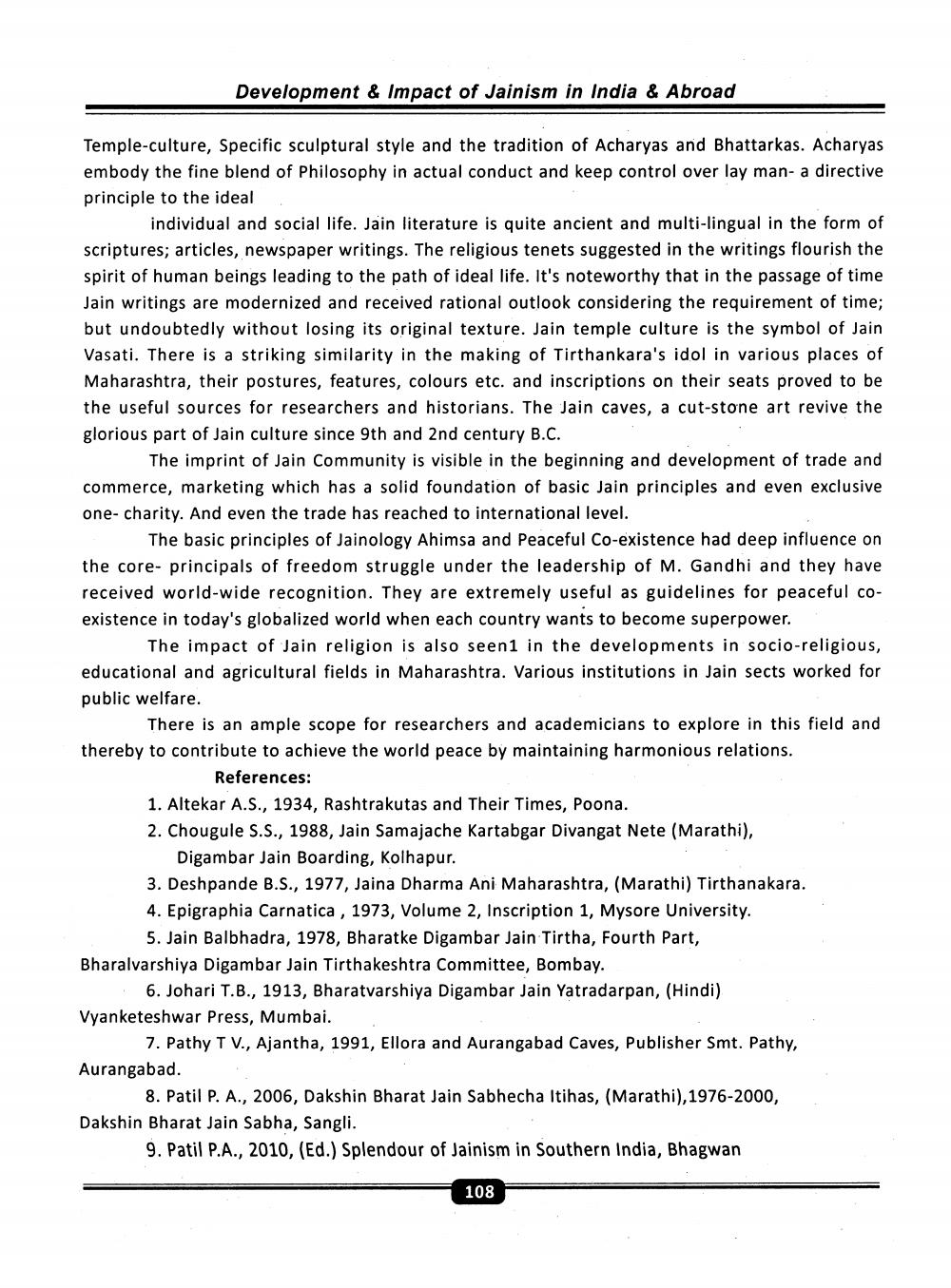________________
Development & Impact of Jainism in India & Abroad
Temple-culture, Specific sculptural style and the tradition of Acharyas and Bhattarkas. Acharyas embody the fine blend of Philosophy in actual conduct and keep control over lay man- a directive principle to the ideal
individual and social life. Jain literature is quite ancient and multi-lingual in the form of scriptures; articles, newspaper writings. The religious tenets suggested in the writings flourish the spirit of human beings leading to the path of ideal life. It's noteworthy that in the passage of time Jain writings are modernized and received rational outlook considering the requirement of time; but undoubtedly without losing its original texture. Jain temple culture is the symbol of Jain Vasati. There is a striking similarity in the making of Tirthankara's idol in various places of Maharashtra, their postures, features, colours etc. and inscriptions on their seats proved to be the useful sources for researchers and historians. The Jain caves, a cut-stone art revive the glorious part of Jain culture since 9th and 2nd century B.C.
The imprint of Jain Community is visible in the beginning and development of trade and commerce, marketing which has a solid foundation of basic Jain principles and even exclusive one- charity. And even the trade has reached to international level.
The basic principles of Jainology Ahimsa and Peaceful Co-existence had deep influence on the core principals of freedom struggle under the leadership of M. Gandhi and they have. received world-wide recognition. They are extremely useful as guidelines for peaceful coexistence in today's globalized world when each country wants to become superpower.
The impact of Jain religion is also seen1 in the developments in socio-religious, educational and agricultural fields in Maharashtra. Various institutions in Jain sects worked for public welfare.
There is an ample scope for researchers and academicians to explore in this field and thereby to contribute to achieve the world peace by maintaining harmonious relations.
References:
1. Altekar A.S., 1934, Rashtrakutas and Their Times, Poona.
2. Chougule S.S., 1988, Jain Samajache Kartabgar Divangat Nete (Marathi), Digambar Jain Boarding, Kolhapur.
3. Deshpande B.S., 1977, Jaina Dharma Ani Maharashtra, (Marathi) Tirthanakara.
4. Epigraphia Carnatica, 1973, Volume 2, Inscription 1, Mysore University.
5. Jain Balbhadra, 1978, Bharatke Digambar Jain Tirtha, Fourth Part, Bharalvarshiya Digambar Jain Tirthakeshtra Committee, Bombay.
6. Johari T.B., 1913, Bharatvarshiya Digambar Jain Yatradarpan, (Hindi) Vyanketeshwar Press, Mumbai.
7. Pathy T V., Ajantha, 1991, Ellora and Aurangabad Caves, Publisher Smt. Pathy, Aurangabad.
8. Patil P. A., 2006, Dakshin Bharat Jain Sabhecha Itihas, (Marathi), 1976-2000, Dakshin Bharat Jain Sabha, Sangli.
9. Patil P.A., 2010, (Ed.) Splendour of Jainism in Southern India, Bhagwan
108




